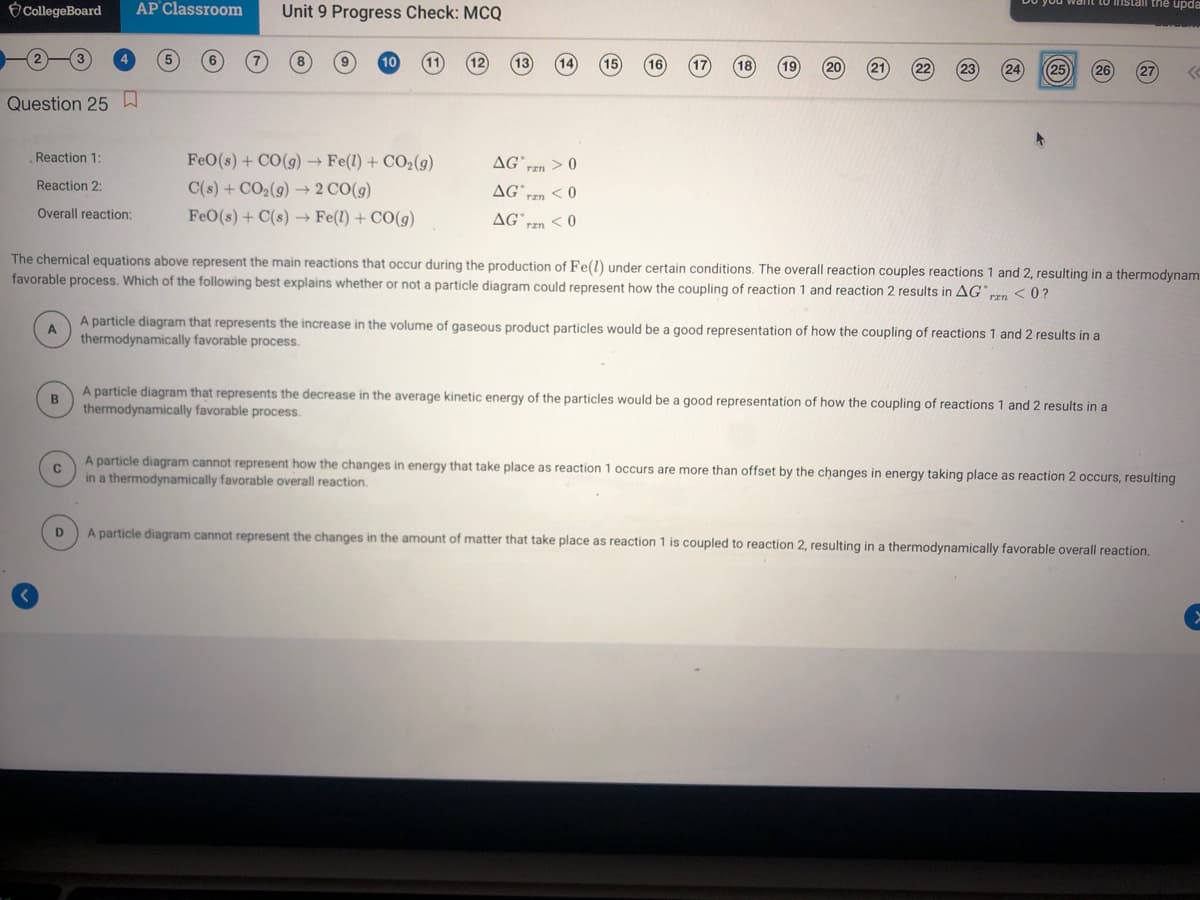Reaction 1: FeO(s) + CO(g) Fe(l) + CO2(9) AG rzn > 0 Reaction 2: C(s) + CO2(9) 2 CO(g) AG < 0 Overall reaction: FeO(s) + C(s) Fe(l) + CO(g) AGn <0 The chemical equations above represent the main reactions that occur during the production of Fe(l) under certain conditions. The overall reaction couples reactions 1 and 2, resulting in a thermodynam favorable process. Which of the following best explains whether or not a particle diagram could represent how the coupling of reaction 1 and reaction 2 results in AG rzn <0? A particle diagram that represents the increase in the volume of gaseous product particles would be a good representation of how the coupling of reactions 1 and 2 results in a thermodynamically favorable process. A particle diagram that represents the decrease in the average kinetic energy of the particles would be a good representation of how the coupling of reactions 1 and 2 results in a thermodynamically favorable process. A particle diagram cannot represent how the changes in energy that take place as reaction 1 occurs are more than offset by the changes in energy taking place as reaction 2 occurs, resulting in a thermodynamically favorable overall reaction. D A particle diagram cannot represent the changes in the amount of matter that take place as reaction 1 is coupled to reaction 2, resulting in a thermodynamically favorable overall reaction.
Thermochemistry
Thermochemistry can be considered as a branch of thermodynamics that deals with the connections between warmth, work, and various types of energy, formed because of different synthetic and actual cycles. Thermochemistry describes the energy changes that occur as a result of reactions or chemical changes in a substance.
Exergonic Reaction
The term exergonic is derived from the Greek word in which ‘ergon’ means work and exergonic means ‘work outside’. Exergonic reactions releases work energy. Exergonic reactions are different from exothermic reactions, the one that releases only heat energy during the course of the reaction. So, exothermic reaction is one type of exergonic reaction. Exergonic reaction releases work energy in different forms like heat, light or sound. For example, a glow stick releases light making that an exergonic reaction and not an exothermic reaction since no heat is released. Even endothermic reactions at very high temperature are exergonic.

Trending now
This is a popular solution!
Step by step
Solved in 3 steps with 3 images




